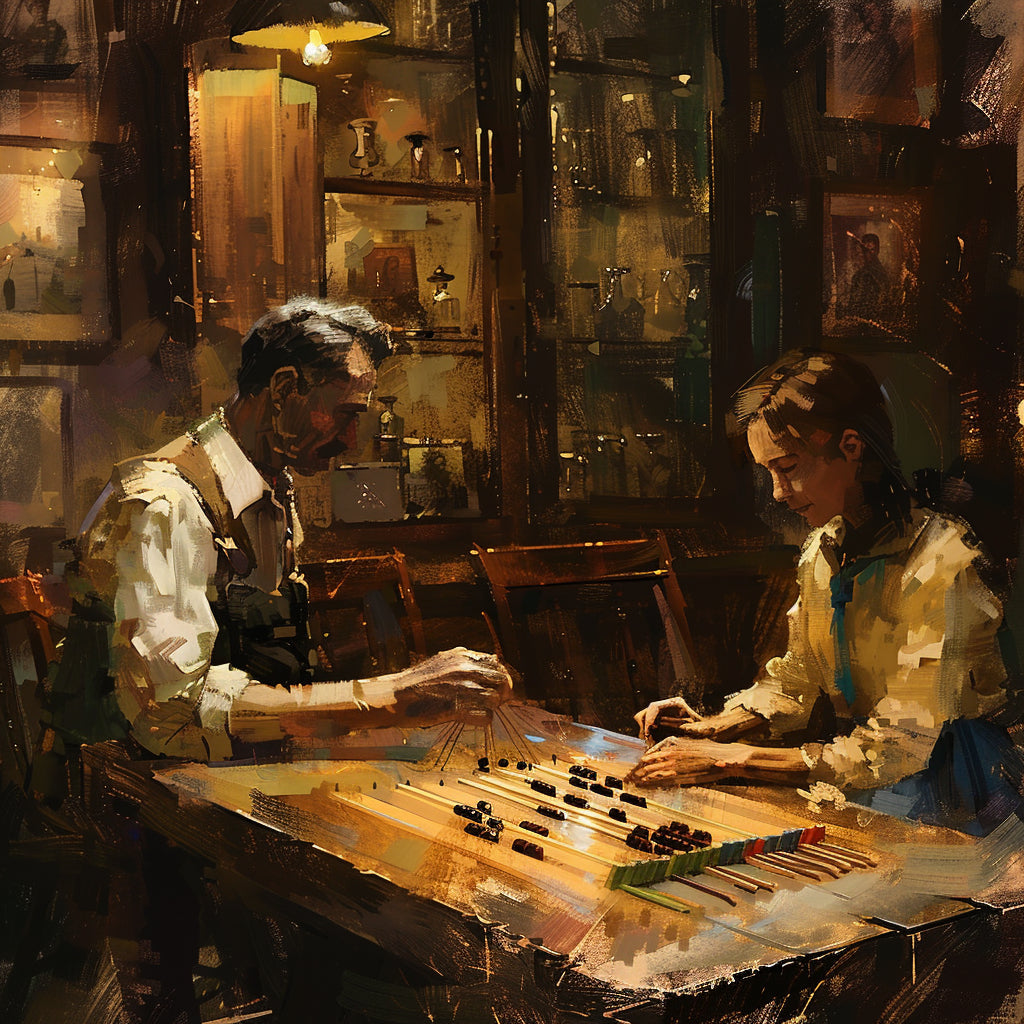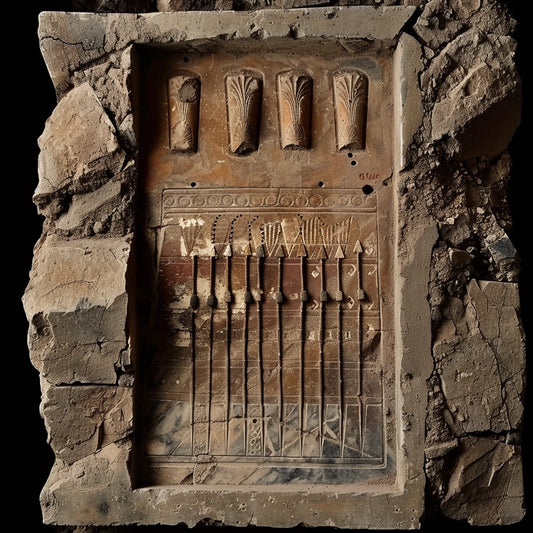
The Most Famous Backgammon Games in History
Introduction:
Backgammon , a game with a history spanning several millennia, continues to fascinate and challenge players around the world. With its origins lost in the mists of time, this game has crossed cultures and eras, evolving from a simple pastime to a global competition of strategy, luck and psychology. In this article, we aim to explore some of the most memorable and influential backgammon games in history. These matchups not only defined the game in their moments, but also left a lasting mark on backgammon culture and strategy.
Backgammon combines elements of deep strategy with an element of dice luck, creating a unique dynamic to each game. This combination makes it not only addictive, but also extremely varied, with each game offering new challenges and learning opportunities. Therefore, the study of historical matches provides not only entertainment but also valuable lessons for players of all levels.

Analysis of these legendary games gives us a window into the minds of some of the game's greatest players, revealing the strategies, tactical thinking and sometimes bold bets that changed the course of games. From tense duels in world championships to friendly matches that laid the foundation for new theories of the game, each matchup selected for this article represents a milestone in the evolution of backgammon.
So, we invite you to join us on this journey through the history of backgammon, where strategy meets luck, and where every roll of the dice can make history. Discover the games that not only captivated audiences and inspired generations of players, but also shaped our understanding and appreciation of this timeless game.
1. Battle for Supremacy: Falafel vs. Mochy (2010),
One of the most electrifying matchups in recent backgammon history took place in 2010, when Matvey "Falafel" Natanzon, a giant of the international backgammon scene, met Masayuki "Mochy" Mochizuki , world champion and one of the most technical players of the game, in a game that would be called the "Battle for Supremacy".
The context of this meeting was loaded with high expectations. Falafel, known for his intuitive, almost mystical approach to the game, had been a charismatic and dominant figure on the backgammon scene for more than a decade. On the other hand, Mochy, with his methodical approach based on analysis and study, represented a new generation of backgammon players, those who combined natural talent with a deep understanding of probability and strategy.
The game was played as part of the World Backgammon Championship, an event that annually attracts the best players in the world. The tension was palpable from the start, with each player having their own supporters and strategies. Falafel opened the game with a series of lucky throws, quickly establishing a lead. However, Mochy was not intimidated, responding with precise moves that showed why he is considered a master of game strategy.
As the game progressed, it became clear that this was not just a matchup between two top players, but a battle between two different philosophies of the game. Falafel, with his aggressive style and penchant for risk, versus Mochy, with his calculated play and strategic approach.
The decisive moment of the game came when Falafel used the "doubling cube" at a key moment, doubling the stakes and the pressure on Mochy. This move, while risky, demonstrated Falafel's confidence in his abilities and desire to dominate the game. Mochy, remaining calm under pressure, analyzed the situation and accepted the challenge, a decision that turned the tide of the game.
Finally, after hours of intense play and strategic exchanges, Mochy was able to turn the tide in his favor, winning the game in a way that surprised many observers. His victory was not only a testament to his exceptional playing skills, but also marked an evolution in the understanding and approach to competitive backgammon.
This memorable match between Falafel and Mochy remains not only a landmark in backgammon history, but also a valuable lesson in the importance of adaptability, courage and mutual respect between two world-class opponents.
2. Duel of the Titans: Nack Ballard vs. Jerry Grandell (1993)
In the year 1993, the world of backgammon witnessed a memorable confrontation, which took place at the World Backgammon Championship in Monte Carlo, between two giants of the game: the American Nack Ballard and the Swedish Jerry Grandell . This game was not only a highlight of the tournament, but also a display of strategy and finesse that captivated and educated the international backgammon community.
Nack Ballard, known for developing "Nackgammon", a variation of backgammon that favors strategic play and piece placement, faced off against Jerry Grandell, a player renowned for his calculating skills and anticipating his opponent's moves. The match was a true war of minds, with each player trying to impose his style and confuse his opponent.

A key moment of the game was Ballard's use of the "doubling cube" at a critical moment, a move that significantly raised the stakes of the game. This strategic decision put pressure on Grandell, forcing him to make a difficult decision between accepting the double and risking a major loss, or refusing and surrendering the game. Grandell accepted the challenge, taking the match to a phase of maximum tension, where every move could tip the balance of victory.
The post-match analysis highlighted not only the tactical mastery of both players, but also the importance of psychology in backgammon. Decisions made at key moments, risk management and the ability to read the opponent's intentions were decisive elements in the development of the game. This game has become a case study for backgammon players around the world, exemplifying the level of strategic thinking and adaptability required to excel at the game.
In the end, the matchup between Ballard and Grandell was more than just a championship matchup; it was a backgammon lesson at its highest level, a demonstration of the beauty and complexity of this ancient game. This "Duel of the Titans" remains etched in the memory of the backgammon community as an example of strategic excellence and passion for the game.
3. Rematch of the Century: Bill Robertie vs. Kit Woolsey (1994)
In the world of backgammon, few events have generated as much anticipation and discussion as the match between Bill Robertie and Kit Woolsey in 1994. Known as the "Rematch of the Century", this matchup took place at a time when both players were at their peak their careers, being recognized not only for their outstanding skills on the board, but also for their theoretical contributions to the game.
Bill Robertie, a two-time world champion, was known for his analytical approach and ability to accurately calculate probabilities in complex game situations. On the other hand, Kit Woolsey, a leading theorist and influential author in the backgammon community, was admired for his deep understanding of the dynamics of the game and his innovative strategies.

The game was close, with lead exchanges and tense moments that kept the spectators and the backgammon community on their toes. A notable aspect of this matchup was the use of the "doubling cube", which added an extra layer of strategy and risk. Both players demonstrated a mastery of cube management, making decisions that not only reflected their probabilistic understanding of the game, but also their ability to read and anticipate their opponent's moves.
A key moment of the match was when Woolsey accepted a double offered by Robertie at a critical moment, a decision that was later analyzed and debated in the backgammon community. This move demonstrated Woolsey's courage and confidence in his own abilities and understanding of the game, but also the risks top players are willing to take.
In the end, the game ended in a close victory for Bill Robertie, but the real winner was the backgammon community, which witnessed a high-class display of play. The "Rematch of the Century" has gone down in backgammon history not only as a confrontation between two giants of the game, but also as a lesson in strategy, courage and mutual respect.
Detailed analysis of this game in specialist publications and backgammon forums has contributed to the theoretical evolution of the game, giving players of all levels new insights into backgammon strategy. To this day, the "Rematch of the Century" is studied by players looking to improve their game, proving that backgammon is a game unmatched in its strategic depth and complexity.
Conclusion:
These memorable confrontations in the world of backgammon not only inspired admiration and inspiration among enthusiasts, but also marked the strategic and cultural evolution of this venerable backgammon game. They point out that success in backgammon, a wooden backgammon game with deep roots in history, requires more than a simple favor of the dice; he demands a deep understanding of strategy, a careful reading of the opponent and a remarkable adaptability to the dynamics of the game.
While backgammon continues to fascinate and evolve, these legendary games remain etched in its history, serving as reference points and sources of learning for players of all levels. Whether played on a classic wooden game board or through a modern digital version, backgammon retains its essence as a strategic, challenging and deeply human game.
Therefore, every game of backgammon, whether played among friends or in a world championship, is an opportunity to celebrate and participate in the history of this ancient game. Playing wooden backgammon is not just a pastime, but an art, a science and, for many, a passion that transcends cultures and generations. At its core, backgammon teaches us about probability, decision, and most importantly, the art of infinite possibilities.







